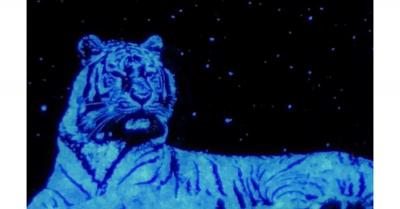Canada-based VueReal is a startup company that develop Micro-LED based microdisplays. The company's Continuous Pixelation micro-printing technology offers high density displays, high production yields and a simple design.

VueReal's founder and CEO, Reza Chaji, was kind enough to answer a few questions we had on the company's technology and business.
Reza, thank you for your time. Can you explain VueReal's micro-printing process and technology?
VueReal’s solution is a true printing process where you do not need to pick LEDs for each transfer. It is based on a cartridge design by VueReal that releases the LEDs selectively into the substrate.
The advantage of this solution is that one tool can make different display sizes and different resolutions. It is compatible with mother glass. Moreover, it can print different types of devices (flip chip, vertical, sensors, leds, …) and different sizes (1 micrometer to 1000s micrometer).
In full operation mode, it is capable of printing >1,000,000,000 LEDs at once, populating a large glass (> Gen 4.5) in less than 10 minutes.
In addition to micro printer and cartridge, we have developed an inspection system to extract the individual LED information at wafer and cartridge level. This allows us to eliminate the defected LEDs before getting transferred to the display increasing yield. We have been achieving 100% yield in our latest results repeatedly.
Furthermore, we have made our own LED structure that has similar EQE as large LEDs even at sub 10 micrometer. This is more appealing as the high EQE happens at low current density needed for active driving displays.
In May 2019 VueReal announced a 30,000 PPI, 100k nits MicroLED microdisplay. Can you tell us more about your microdisplay technology and projects? Are these displays produced on a silicon backplane?
This is based on VueReal’s unique technology for high ppi displays. This technology offers self-aligned and self repair process needed for such high-ppi applications. In addition, VueReal has developed a unique approach to color high-ppi displays that offer small form factor at >10000 ppi.
It’s worth mentioning that despite such small LEDs, the EQE stays very high (not significantly affected by the size reduction). We are currently in discussion with some players to develop a partnership which most probably will be exclusive for a period of time.
I understand that VueReal is also developing transparent displays, can you give us more information on that? Will these still be microdisplays?
VueReal business model is to develop the micro-printer platform (high performance micro devices, inspection tools, and micro printer). We will offer the tools (for sale) to our partners and will offer cartridges for printing displays.
To demonstrate the capability of such technology we made a few transparent arrays. While most of transparent arrays are based on very low ppi, we managed to get high transparency (>60%) at high ppi (~200 ppi), thanks to our small LEDS and micro printing process capable for printing such small LEDs.
In October 2018 VueReal closed $8.5 million investment from SDTC to build a pilot fabrication center. Can you update us on the status of this new fab?
We completed our in-house device fabrication facility in 2019. We are now in ramp up stage.
While the prospects of MicroLED for AR applications are very promising, some people estimate that color micro-LED microdisplays will take many years to reach the market. How close do you think this technology is for actual commercialization?
We have a unique approach to color displays for AR applications that is available now. It may not be applicable to all AR devices but can cover most of them. As this technology is different from our main technology platform, we are working with couple of companies to pick one as partner to commercialize it. Most probably the arrangement will be an exclusive for some time for the selected company.
When should we expect the first MicroLED display from VueReal? Which applications and markets are you targeting?
VueReal has sold some displays already to interested parties. As mentioned VueReal is developing technology to enable microLED for mainstream applications not just super size (tiled based) or high PPI displays.
Even for TV, tile solution has lots of limitation. I won’t have a TV at my house that I can see the tile no matter what. So having a solution to print TV on a single large glass is essential. And that is where we are seeing lots of traction.
Moreover, automotive is very promising for VueReal microLED solution as it can offer affordable displays with high performance and reliability.
For high end smartphone also, our solution can be very promising at it offers crazy performance at affordable cost with significantly lower power consumption. Imagine your phone last 2 to 3 days instead of barely one day.
Thank you Reza for the information - we are looking forward to seeing VueReal's new display prototypes soon at SID Displayweek!

